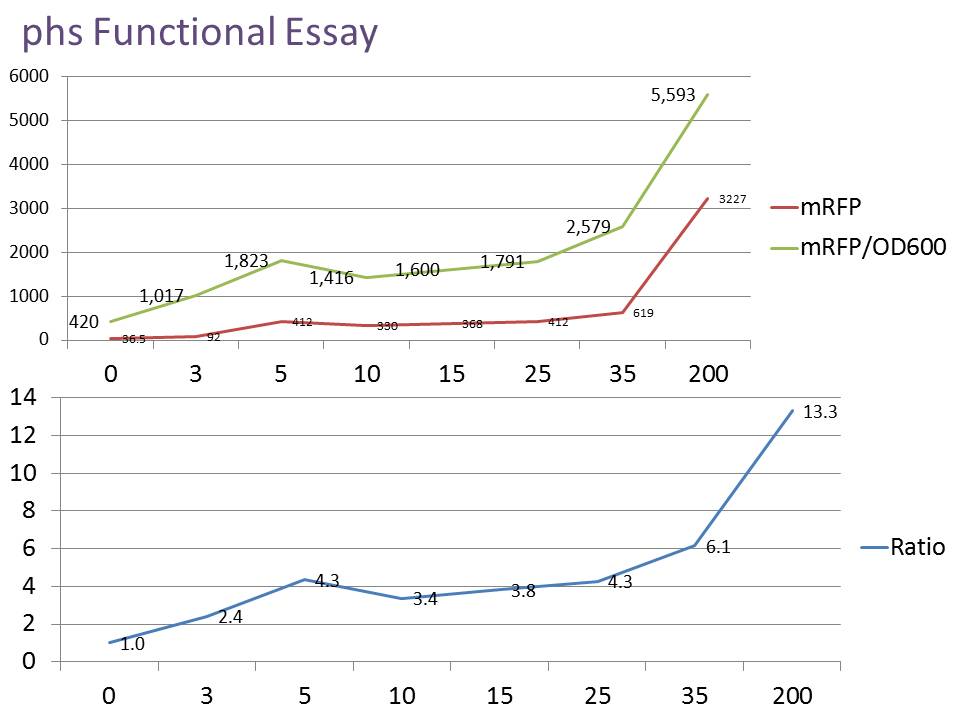Team:NTU-Taida/Result/Thermal-Promoter
From 2012.igem.org
(Difference between revisions)
(→Modified PCI) |
|||
| (3 intermediate revisions not shown) | |||
| Line 4: | Line 4: | ||
==Promoter P<sub>hs</sub>== | ==Promoter P<sub>hs</sub>== | ||
| - | Promoter P<sub>hs</sub> is a novel thermal response designed by Wayne E Taylor et. al; it is super sensitive to temperature increase. We would expect to see the sudden increase in expression of the reporter gene, in this case, mRFP. | + | <p style="text-indent: 2em;">Promoter P<sub>hs</sub> is a novel thermal response designed by Wayne E Taylor et. al; it is super sensitive to temperature increase. We would expect to see the sudden increase in expression of the reporter gene, in this case, mRFP. </p> |
| - | Before start, we incubate the E. coli with promoter P<sub>hs</sub> and mRFP as a reporter at room temperature 25 Celsius degree. We transient shift the E. coli to a higher temperature ambient (37 Celsius degree), and closely monitor the expression of the reporter. As we can see in the figure, the promoter responds to the temperature changes pretty quick and after 30 minutes, it show 6 fold augmentation in mRFP emission (wavelength 610 nm). We continue the test and tendency of increment shows no sign of subsidence. | + | <p style="text-indent: 2em;">Before start, we incubate the E. coli with promoter P<sub>hs</sub> and mRFP as a reporter at room temperature 25 Celsius degree. We transient shift the E. coli to a higher temperature ambient (37 Celsius degree), and closely monitor the expression of the reporter. As we can see in the figure, the promoter responds to the temperature changes pretty quick and after 30 minutes, it show 6 fold augmentation in mRFP emission (wavelength 610 nm). We continue the test and tendency of increment shows no sign of subsidence. </p> |
[[File:NTU-Taida-Result-Thermal-phs.png|600px|center]] | [[File:NTU-Taida-Result-Thermal-phs.png|600px|center]] | ||
| - | |||
| - | |||
| - | |||
| - | |||
| - | |||
| - | |||
| - | |||
| - | |||
| - | |||
| - | |||
<!-- EOF --> | <!-- EOF --> | ||
{{:Team:NTU-Taida/Templates/ContentEnd}}{{:Team:NTU-Taida/Templates/Footer|ActiveNavbar=Result, #nav-Result-Thermal}} | {{:Team:NTU-Taida/Templates/ContentEnd}}{{:Team:NTU-Taida/Templates/Footer|ActiveNavbar=Result, #nav-Result-Thermal}} | ||
Latest revision as of 13:25, 26 October 2012
Result of Thermal Promter
Contents |
Promoter Phs
Promoter Phs is a novel thermal response designed by Wayne E Taylor et. al; it is super sensitive to temperature increase. We would expect to see the sudden increase in expression of the reporter gene, in this case, mRFP.
Before start, we incubate the E. coli with promoter Phs and mRFP as a reporter at room temperature 25 Celsius degree. We transient shift the E. coli to a higher temperature ambient (37 Celsius degree), and closely monitor the expression of the reporter. As we can see in the figure, the promoter responds to the temperature changes pretty quick and after 30 minutes, it show 6 fold augmentation in mRFP emission (wavelength 610 nm). We continue the test and tendency of increment shows no sign of subsidence.
 "
"


